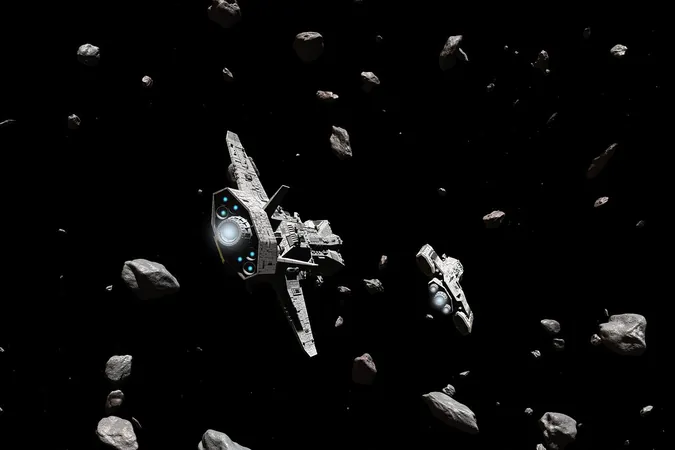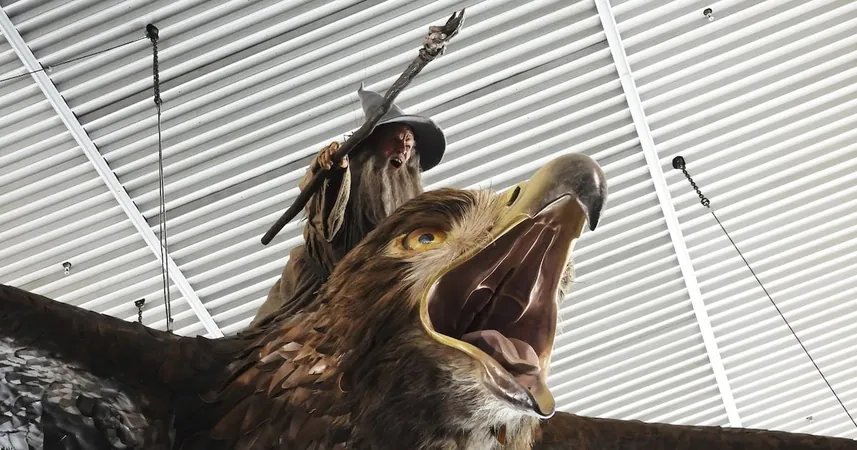
Asteroid Belt: The Spacecraft Highway You Didn't Know Existed!
2025-04-16
Author: William
In countless sci-fi films, navigating an asteroid belt is often portrayed as a nail-biting, life-or-death struggle. Picture gigantic rocks hurling through space with little room for escape—it's the stuff of cinematic legend, but is it based in reality?
The Great Asteroid Belt Illusion
You might remember C-3PO from "The Empire Strikes Back" lamenting that the odds of successfully flying through an asteroid field are "approximately 3,720 to 1." But how much truth is there in that dramatic line? Is the asteroid belt really a chaotic mess of floating boulders just waiting to crush an unsuspecting spaceship?
The Astounding Truth About Asteroids
In fact, the vastness of space reveals a surprising reality: the distances between asteroids are monumental. The main asteroid belt in our Solar System, nestled between Mars and Jupiter, sees an average distance of nearly 1 million kilometers (about 621,370 miles) separating these rocky bodies.
To put it into perspective, that's 24 times the circumference of Earth! If Han Solo struggles there, maybe it's time for him to hang up his pilot's hat.
NASA's Astounding Success Stories
So just how perilous is the asteroid belt? According to NASA, it's not hazardous at all. Over the years, multiple spacecraft have successfully traversed this seemingly treacherous region. NASA's Pioneer 10 spacecraft became the first brave traveler when it entered the asteroid belt on July 15, 1972, and emerged unscathed by February 1973, after an epic journey of roughly 435 million kilometers (271 million miles).
At the time, scientists held their breath, unsure of the actual density of potentially damaging particles. Fortunately, Pioneer 10 turned out to be an unexpected trailblazer.
The Space Parade Continues!
Pioneer 10 is just one of nine spacecraft that have passed through the asteroid belt, including notable missions like Voyager 1, Voyager 2, and more recently, the Lucy spacecraft which completed a fly-by of the main-belt asteroid Dinkinesh in 2023.
Asteroid Belts Beyond Our Solar System
Interestingly, scientists are discovering asteroid belts in other star systems. Though these distant siblings of our own asteroid belt may exist, it's crucial to note that they likely won't resemble the tightly packed chaos depicted in films. If they did, asteroids would constantly collide, shattering into pieces and becoming cosmic dust.
Your Future Space Adventure Awaits!
Planning a daring mission through the asteroid belt? Get ready for an unexpected thrill because, according to NASA's research, traversing this cosmic expanse is not just possible—it's a safe adventure just waiting for you!









 Brasil (PT)
Brasil (PT)
 Canada (EN)
Canada (EN)
 Chile (ES)
Chile (ES)
 Česko (CS)
Česko (CS)
 대한민국 (KO)
대한민국 (KO)
 España (ES)
España (ES)
 France (FR)
France (FR)
 Hong Kong (EN)
Hong Kong (EN)
 Italia (IT)
Italia (IT)
 日本 (JA)
日本 (JA)
 Magyarország (HU)
Magyarország (HU)
 Norge (NO)
Norge (NO)
 Polska (PL)
Polska (PL)
 Schweiz (DE)
Schweiz (DE)
 Singapore (EN)
Singapore (EN)
 Sverige (SV)
Sverige (SV)
 Suomi (FI)
Suomi (FI)
 Türkiye (TR)
Türkiye (TR)
 الإمارات العربية المتحدة (AR)
الإمارات العربية المتحدة (AR)